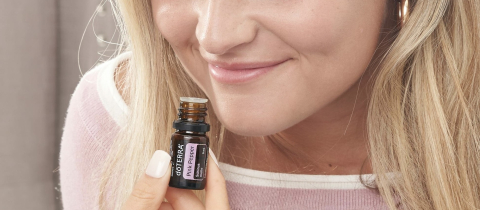Oils are defined as any net uncharged chemical substance that is a thick liquid at room temperature and is both hydrophobic (does not mix with water) and lipophilic (does mix with fats, or lipids). When we think of them, our minds tend to focus on the kitchen: olive, canola or peanut oil. But there are also oils in your garage (motor oil), bathroom (conditioner) and your art collection (oil paints).
Animal and vegetable oils are a mixture of triglycerides. A triglyceride is just three fatty acids held together by a molecule of glycerol, and they can be saturated or unsaturated. Saturated fats have the maximum number of carbon-hydrogen bonds, where unsaturated fats contain extra carbon-carbon bonds. These double bonds give unsaturated fats lower melting points, because the double bonds put kinks in their strands, preventing them from stacking nicely on each other.
Practically, this means that oils made mostly of unsaturated fats are liquids at room temperatures (like olive oil), and oils made mostly of saturated fats are solids (more commonly referred to simply as fats, like cocoa butter or lard).
So what about essential oils? The name is a bit misleading, since they aren’t oils in the classic sense, and aren’t essential in the same way essential amino acids are. They are hydrophobic, but unlike animal and vegetable oils, are not made of fatty acids. Their composition instead depends heavily on what plant it originated from. The “essential” in their name refers to the fact that the oil contains the essence of a plant, its fragrance.
Essential oils are often extracted via distillation (as shown in the infographic), but can also be physically squeezed out of some plants (like orange peels) or, in the case of flowers, extracted with a nonpolar solvent.

It’s easy to forget amid the many baseless health claims made for essential oils that they do have real purposes. Some, like clary and lemon oil, are used for flavouring. Others are used primarily for adding fragrance to cosmetics, foods or your home via a diffuser. Clove oil is used for euthanizing fish in labs, orange oil can repel ants, and eucalyptus oil is commonly used in cold remedies like vapour rub.
But just because most essential oils don’t help your health doesn’t mean they’re innocuous. Many are very flammable, with flashpoints as low as 50°C, others are photosensitizers and can make your skin more vulnerable to sun damage. Contact dermatitis from essential oils is fairly common, and there’s growing evidence that they can also affect hormone balances, particularly in young males. Several essential oils (including tea tree oil) are toxic to domestic animals, and while humans run little risk of achieving a toxic dose of most essential oils, there are exceptions. Cassia oil, derived from Chinese cinnamon, requires only 0.3 ml per kg of body weight to achieve dermal toxicity. That means that only 17 mL (little more than a tablespoon) of the oil applied to the skin could have tragic consequences.
So, all things considered, I’ll keep my vegetable oils for cooking and my essential oils strictly for smelling. Though I have always thought that coconut oil smells pretty nice.
Want to engage with this content? Comment on this on our Facebook page!







